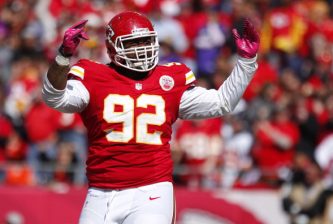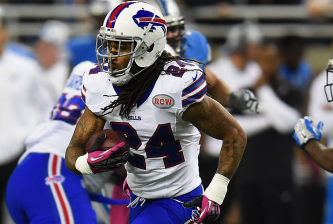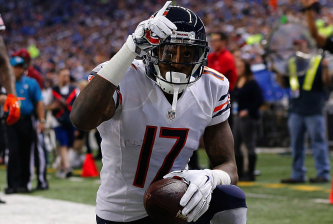The Seattle Seahawks have a daunting, highly physical, and downright painful defense. This is not new or shocking information. Their success that ended in a championship last year is grounded in a unique blend of speed and power, especially in the secondary, where all four starters are large, and play large.
But it would be reasonable to expect that against the toughest competition, even the best defense in the NFL could take a step back, or bend even a little. That simply doesn’t happen, and when the Seahawks owned Aaron Rodgers and the Packers last night (mopping them up 36-16), they reached a new tier of dominance.
They can make Hall of Fame caliber quarterbacks look ordinary.
Reflecting on Seattle’s last four games including Thursday night, we see a gauntlet of the league’s best quarterbacks, and what could have easily been an aerial bombardment. There was Rodgers last night, Peyton Manning in the Super Bowl, and Drew Brees in the divisional round.
Both Brees and Manning threw for over 5,000 yards last year, and all three completed at least 66 percent of their passes. Rodgers missed nearly half of the 2013 season with a collarbone injury, but Brees and Manning chucked only a combined 22 interceptions even though they were extreme high-volume throwers, with 1,309 pass attempts between them.
Those are just a few digits to show that Manning, Brees, and Rodgers are three of the best quarterbacks this planet has to offer. And here’s what the Seattle defense did to them:
- Combined over the three games the Seahawks allowed 39 points. The Broncos averaged 37.9 points per game last year, and all three offenses quarterbacked by Manning, Brees, and Rodgers posted at least 25 points weekly in 2013.
- Brees was able to compile some yardage late, and the 309 passing yards he finished with felt like an accomplishment. But Manning and Rodgers were held to a combined 469 yards (189 yards for Rodgers, and 280 for Manning). Last year Manning led the league with an average of 342.3 yards per game, and Rodgers finished fifth at 281.8.
- During the 2013 regular season Brees completed 68.6 percent of his passes, the second highest total among quarterbacks with at least 100 attempts. Against the Seahawks that dropped to 55.8.
- Last year Manning and Rodgers averaged over eight yards per attempt, with the latter leading at 8.7. They both averaged only 5.7 YPA against the Seahawks.
- The Packers moved along at 6.0 yards per play last year, and the Broncos were at 6.3. Against Seattle? 4.5 for Rodgers’ offense last night, and 4.8 for Manning’s juggernaut unit.
The Seattle secondary is suffocating, and the feeling of walls closing in on a quarterback grows when Richard Sherman cuts off half the field, and an offense chooses not to target him even once as the Packers did last night. Life doesn’t get easier on the other side with Byron Maxwell, who intercepted Rodgers. It was his fifth interception over his past five regular-season games.
The solution? It might be countering physicality with neck-whipping speed downfield, as the Colts did in Week 5 last year during one of the Seahawks’ three regular-season losses. Andrew Luck didn’t pile up yardage in that game either (only 229 yards). But when he hit, he hit deep on connections with T.Y. Hilton for 73 and 29 yards, both touchdowns.
That sort of speed is rare, and so is the Seahawks’ extreme brute force approach to defensive football. Bringing the pain is still winning, and the quarterback seems to matter little.




